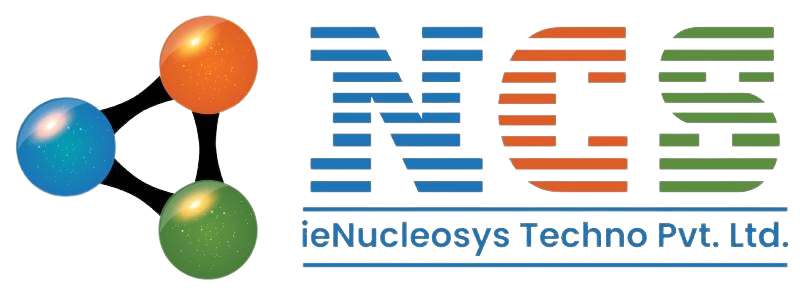In today’s competitive business environment, improving client satisfaction is no longer just a nice-to-have; it’s a vital strategy for long-term success. Satisfied clients become loyal customers, brand advocates, and consistent revenue sources. Whether you run a startup or an established company, prioritizing client satisfaction leads to better retention, higher referrals, and a stronger market reputation.
This comprehensive guide explores effective ways to enhance client satisfaction in 2025, highlighting strategies that foster trust, deliver exceptional service, and create meaningful connections.
Why Is Improving Client Satisfaction Crucial?
Businesses thrive on their clients. When clients feel valued and their needs are met promptly, they are more likely to continue doing business and recommend your services to others. Research consistently shows a direct link between customer satisfaction and profitability.
Moreover, in the age of social media and online reviews, one unhappy client can impact your brand’s reputation significantly. By focusing on improving client satisfaction, companies can reduce churn rates, increase customer lifetime value, and differentiate themselves from competitors.
Key Strategies for Improving Client Satisfaction
1. Understand Client Needs Thoroughly
Effective communication is the foundation of any client relationship. Take time to listen actively, ask clarifying questions, and understand your client’s goals and pain points. Using customer feedback tools and surveys can provide valuable insights into their expectations.
Tailoring your products or services to meet these specific needs creates a personalized experience that clients appreciate, boosting satisfaction significantly.
2. Deliver Consistent Quality
One of the biggest factors in client satisfaction is reliability. Clients expect consistent quality in your products or services every time they engage with you. Establish robust quality control measures and maintain high standards throughout your delivery process.
When clients know they can depend on you for excellence, trust builds naturally, encouraging repeat business.
3. Provide Timely and Transparent Communication
Clients want to stay informed about project progress, timelines, and any potential challenges. Regular updates and transparent communication build confidence and reduce uncertainty.
Use multiple channels—emails, calls, or project management platforms—to keep clients in the loop. Address concerns quickly and honestly to avoid misunderstandings.
4. Empower Your Team with Client-Centric Training
Your employees are on the front lines of client interaction. Training your team to adopt a client-centric mindset ensures they prioritize client satisfaction in every decision and interaction.
Focus on skills like empathy, problem-solving, and effective communication. When your staff feels empowered, they deliver better service, which reflects positively on your brand.
5. Implement Efficient Problem Resolution Processes
No business is perfect, and issues may arise. What matters most is how you handle problems. Establish a clear, efficient process for addressing client complaints and resolving conflicts.
Respond promptly, take ownership, and follow up to ensure the solution meets the client’s expectations. This proactive approach can turn dissatisfied clients into loyal advocates.
Leveraging Technology to Boost Client Satisfaction
In 2025, technology plays a pivotal role in enhancing client relationships. Customer Relationship Management (CRM) systems, chatbots, and automated feedback tools help businesses streamline communication and provide personalized experiences at scale.
Using data analytics to monitor client behavior and preferences allows you to anticipate needs and tailor your services accordingly. Technology also facilitates faster response times and more accurate information sharing, both critical to client satisfaction.
Measuring Client Satisfaction Effectively
To improve what you can measure, implement reliable client satisfaction metrics such as Net Promoter Score (NPS), Customer Satisfaction Score (CSAT), and Customer Effort Score (CES). Regularly collecting and analyzing this data helps you identify strengths and areas needing improvement.
Act on feedback to continuously refine your processes and elevate the client experience. Transparency about your efforts to improve based on client input also strengthens trust.
The Role of Personalization in Client Satisfaction
Personalized experiences resonate more deeply with clients than generic service. Use client data responsibly to customize your communications, offers, and services. Address clients by name, recognize their history with your business, and suggest relevant solutions.
Personalization demonstrates that you value each client as an individual, fostering stronger emotional connections and loyalty.
Building Long-Term Relationships for Sustainable Success
Improving client satisfaction isn’t a one-time effort—it’s a continuous journey. Invest in nurturing long-term relationships by staying engaged beyond initial transactions. Follow up after project completion, send helpful resources, and celebrate client milestones.
These gestures show clients they matter beyond just business, encouraging ongoing partnership and advocacy.
Common Pitfalls to Avoid in Client Satisfaction Efforts
-
Ignoring feedback: Failing to act on client input can damage trust and satisfaction. Always acknowledge and address concerns.
-
Overpromising and underdelivering: Set realistic expectations to avoid disappointment.
-
Poor communication: Lack of transparency or delayed responses frustrate clients.
-
Inconsistent service quality: Fluctuating standards confuse and alienate clients.
Avoiding these mistakes will help maintain a positive client experience and protect your brand reputation.
Conclusion: The Impact of Improving Client Satisfaction on Your Business Growth
Focusing on improving client satisfaction drives tangible business results—higher retention rates, more referrals, and increased revenue. By understanding client needs, ensuring quality, maintaining transparent communication, and leveraging technology, companies can build lasting relationships that fuel growth.
Prioritize client satisfaction as a core business value in 2025 to stay competitive and thrive in an ever-changing marketplace.
